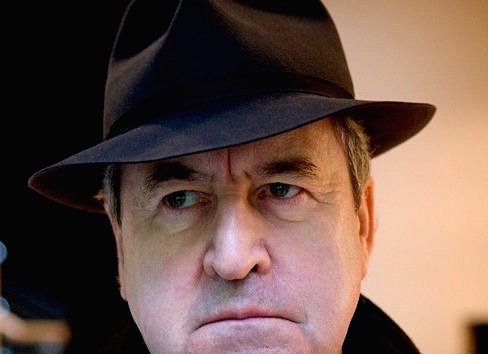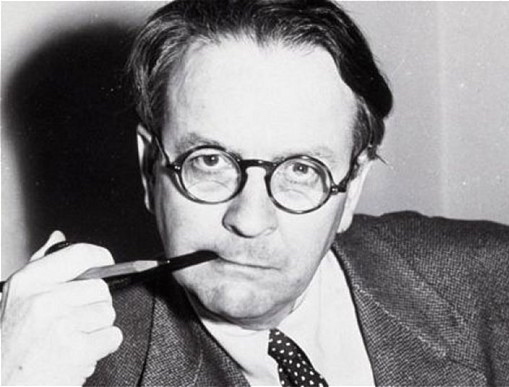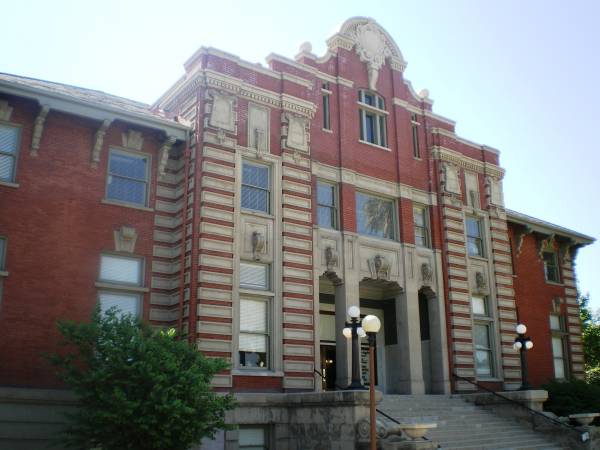“I liked the idea of the outdoors. I mean I liked the thought of it being there: the trees, the grass, the birds in the bushes, all that. I even liked looking at it, sometimes, from the highway, say, through a car windshield. What I didn’t much care for was being out in it, unprotected.”—Philip Marlowe
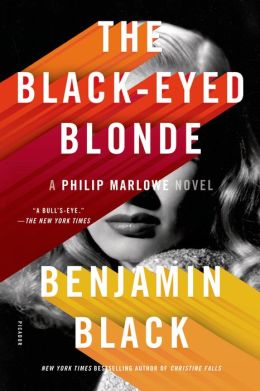 It is no secret that “Benjamin Black,” author of nine noir crime novels, is the pen name of highly esteemed Irish author John Banville, author of sixteen literary novels and winner of more than twenty of the writing world’s most prestigious prizes, including the Man Booker Prize for The Sea. In these literary novels, Banville works as an artist, producing thoughtful and beautifully articulated novels at the rate of about one every two years. As Benjamin Black, Banville has written an additional eight noir crime thrillers, seven of them starring a pathologist named Quirke, and in these novels he is seen as a craftsman, rather than an artist, a recognition of the distinction between the genres and the fact that his crime novels are produced at a much faster speed, approximately one a year. The Black-Eyed Blonde, his ninth noir mystery, is his first novel written from the point of view of Philip Marlowe, the popular hard-boiled detective featured in six novels and a series of short stories by one of the earliest noir novelists, Raymond Chandler, between 1939 and 1958. Hard-drinking and often down-on-his luck, detective Philip Marlowe is shown as a loner who says what he thinks, a man with few friends and no long-term love in his life.
It is no secret that “Benjamin Black,” author of nine noir crime novels, is the pen name of highly esteemed Irish author John Banville, author of sixteen literary novels and winner of more than twenty of the writing world’s most prestigious prizes, including the Man Booker Prize for The Sea. In these literary novels, Banville works as an artist, producing thoughtful and beautifully articulated novels at the rate of about one every two years. As Benjamin Black, Banville has written an additional eight noir crime thrillers, seven of them starring a pathologist named Quirke, and in these novels he is seen as a craftsman, rather than an artist, a recognition of the distinction between the genres and the fact that his crime novels are produced at a much faster speed, approximately one a year. The Black-Eyed Blonde, his ninth noir mystery, is his first novel written from the point of view of Philip Marlowe, the popular hard-boiled detective featured in six novels and a series of short stories by one of the earliest noir novelists, Raymond Chandler, between 1939 and 1958. Hard-drinking and often down-on-his luck, detective Philip Marlowe is shown as a loner who says what he thinks, a man with few friends and no long-term love in his life.
As The Black-Eyed Blonde opens, Marlowe is looking out the window of his office, near the corner of Cahuenga and Hollywood. In straight-forward and smart prose he notes that “it was one of those Tuesday afternoons in summer when you wonder if the earth has stopped revolving. The telephone on my desk had the air of something that knows it’s being watched.” A beautifully dressed young woman with long legs is waiting for the light to change so that she can cross the street. “She looked to the left and right and left again – she must have been so good when she was a little girl – then crossed the sunlit street, treading gracefully on her own shadow.” In few words, Black creates a mood and a setting through the offbeat observations of the speaker, Philip Marlowe, who promptly adds a twist so that the reader does not misunderstand his mood: “So far it had been a lean season,” a comment which he follows with a list of his latest dull and unrewarding cases.
All this changes when the sound of high heels on the wooden floor in his waiting room “gets something going” in him. “I was about to call to her to come in, using my special deep-toned, you-can-trust-me-I’m-a-detective voice, when she came in anyway, without knocking.” Further description of her appearance and her gestures, create a black-and-white-movie scene, and few readers will be able to resist filling in the picture of this “black-eyed-blonde” with a favorite actress from the period. However “pulpy” Black’s writing may be, in keeping with that of Chandler, it certainly ranks with the best of pulpy, involving the reader and immediately setting up Marlowe’s newest adventure without using obvious clichés. The “black-eyed blonde” is a Mrs. Clare Cavendish, who wants Marlowe to find Nico Peterson, a movie agent, who disappeared mysteriously two months ago.
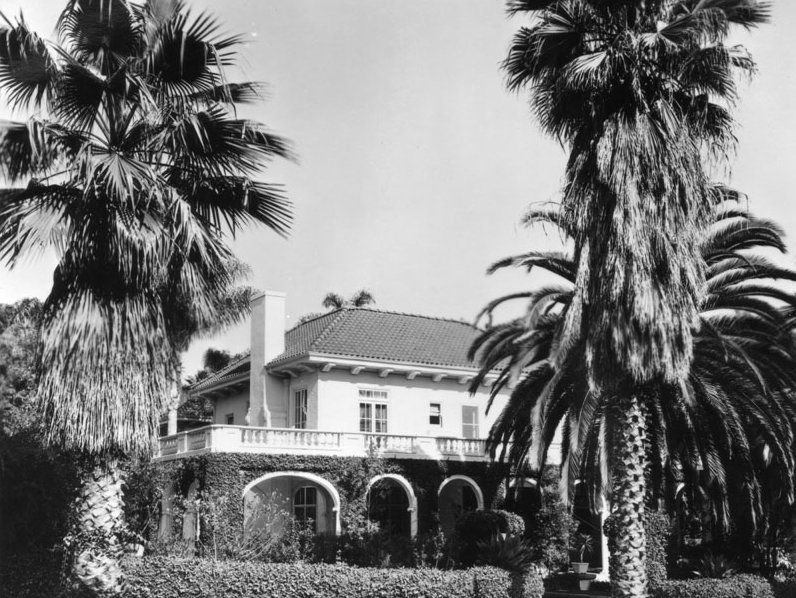
The elegant Gillette Swanson House, now demolished, might have been a model for the house where Clare Cavendish lives.
As the novel develops, Marlowe becomes better acquainted with Clare Cavendish, the daughter of Dorothea Langriche, an Irish woman who made a fortune by developing a line of rose-scented perfumes. Upon visiting the elegant family mansion where Clare Cavendish lives, Marlowe also meets Clare’s brother Rett and Clare’s husband Richard Cavendish, and his horses, all of whom also appear to live there. Their interrelationships and their self-satisfaction confirm for Marlowe the enormous gap between their lifestyles and his own. When Clare, upon further questioning, tells Marlowe that she not only saw Peterson a week ago but that she was present when he died, Marlowe realizes that something is really wrong with this story.
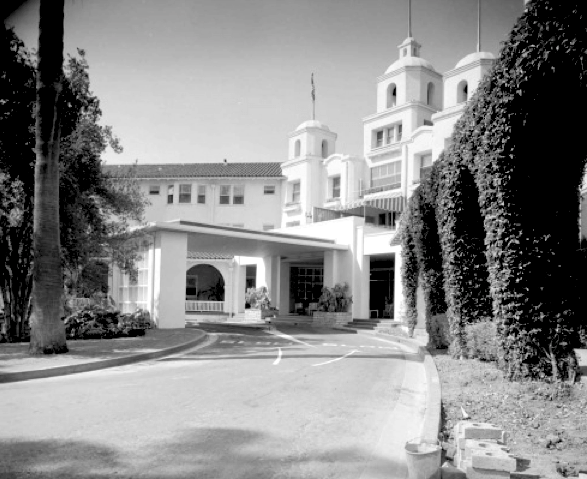
It is easy to imagine Marlowe meeting Clare’s mother here at the Beverly Hills Hotel. Photo ca. 1940.
Marlowe uses his contacts with a few of the police to find out more information, going to the Los Angeles County Coroner’s Office to view scenes of Peterson’s death, then meets with a friendly cop to discuss the case. He is concerned because everyone seems to know he is working on the case, and he suspects he is being watched. He is uncomfortable when he learns that Clare knows the woman he had hoped to marry, and equally uncomfortable when Clare’s mother calls him to meet her at the “Ritz-Beverly Hotel.” The Cahuilla Club, to which everyone in Clare’s social set seems to belong, has a checkered collection of wealthy patrons and managers, he discovers. Not only does everyone there seem to know everyone else, but those in charge seem able to control the outcomes of virtually every disagreement in ways which benefit themselves, doing whatever is necessary to get what they want.
At the halfway point, the novel changes from being a lightweight period mystery, however well written and however much fun, to noticeably darker fare. The first love scene in the novel suddenly changes without warning when Marlowe learns that a body has been discovered at the Encino Reservoir. The condition of the body, someone Marlowe knows, is shockingly bloody, indicating a terrible beating involving the breaking of bones in the face before the throat was slit. Again, overlaps occur among the different subplots, involving the question of Peterson and whether he is alive or dead. Before long, Marlowe himself is in danger, and he does not know why. When he is very nearly killed, he and a police friend begin to investigate drug running, the family backgrounds of people Marlowe thought he knew, the suicide of a suspect, and still more deaths. The dark twist at the end of the novel may surprise even sophisticated fans of noir.
As “pulp fiction” goes, this is probably among the best, though it is a long way from John Banville’s literary work. Still, critics and most fans of Raymond Chandler have celebrated the closeness of Black’s version of Marlowe to that of the original. From the brand of cigarettes that Marlowe smokes to the continuation of the on-going story of Marlowe as he was shown in the last of the Chandler novels, Black’s depiction of the characters and period are praised for their accuracy and similarity to Chandler’s work. Though the novel’s cold aloofness may put off some readers, it is consistent with the novel’s theme: “People get hurt unless they keep a sharp lookout.”
ALSO by Benjamin Black: A DEATH IN SUMMER (Quirke), VENGEANCE (Quirke), CHRISTINE FALLS (Quirke), THE SILVER SWAN (Quirke), EVEN THE DEAD (Quirke)
Photos, in order: The author’s photo is from http://www.rte.ie
Raymond Chandler’s photo appears on http://www.telegraph.co.uk/
The Gillette Swanson House, now demolished, resembles the description of the house where Clare Cavendish and family are living. http://skyscraperpage.com/
The entrance to the Beverly Hills Hotel, ca. 1940, has not change much. This is probably the model for the “Ritz-Beverly Hotel” here. http://www.martinturnbull.com
A body in shocking condition is found at the Encino Reservoir: http://www.encinonc.org/
The art deco County Coroner’s Office in Boyle Heights is seen here: http://en.wikipedia.org
